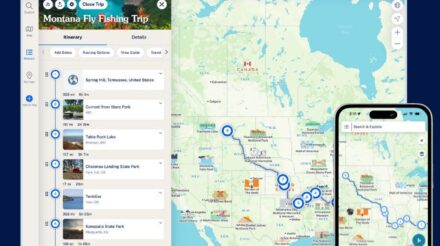When approaching Yellowstone National Park from the east, your first view is of the vast, wild, and eerie landscape formed by ancient volcanoes. It’s shaped by thousands of years of thermal activity and scarred in more recent times by fire. As you drive farther into the park, the vastness is shared with visitor centers, traffic, and crowds.
Key Takeaways
- First trip needs at least five or six days with a rest day to handle driving, crowds, and weather.
- From the east, Route 16 is reasonable for RVs, while Route 14 is scary and 14A terrifying.
- Fishing Bridge is the only campground inside the park with full hookups, though it has a higher price tag.
Yellowstone RV Trip Planner: Routes, Campsites, and Must-See Stops
How Big is Yellowstone for RV Travel?
A Yellowstone RV trip can be overwhelming to plan and execute, but it’s absolutely worth it. Yellowstone offers spectacular landscapes with one-of-a-kind terrain and geological surprises at every turn. It’s a place every U.S. traveler should visit, but figuring out the best way to explore the park’s 3,472 square miles can be daunting.
What First-Time RV Visitors Need to Know
The good news is that much of the trip planning has already been done for you—just follow the park’s two big loops. RVers can cover ground at a decent pace by planning which stops to make along the loop each day. As you plan, keep in mind that you won’t be able to see everything (after all, the park spans three states), and it’s perfectly okay to just hit the highlights on a first trip and to save certain sights for another time.
Yellowstone RV Travel Tips: How Many Days, Crowds, and Weather
How Many Days for a Yellowstone RV Trip?
It’s difficult to recommend an ideal trip length for a Yellowstone RV trip because there’s just so much to see. An RV trip to Yellowstone generally involves long days with lots of driving and crowds, which can cause exhaustion for even the most seasoned traveler. If you’re planning your first RV trip to Yellowstone National Park, you should give yourself at least five or six days, with a planned rest day where you stay close to the campground. This trip length is manageable for most people, but still allows for enough time to see many of the park’s best sights.
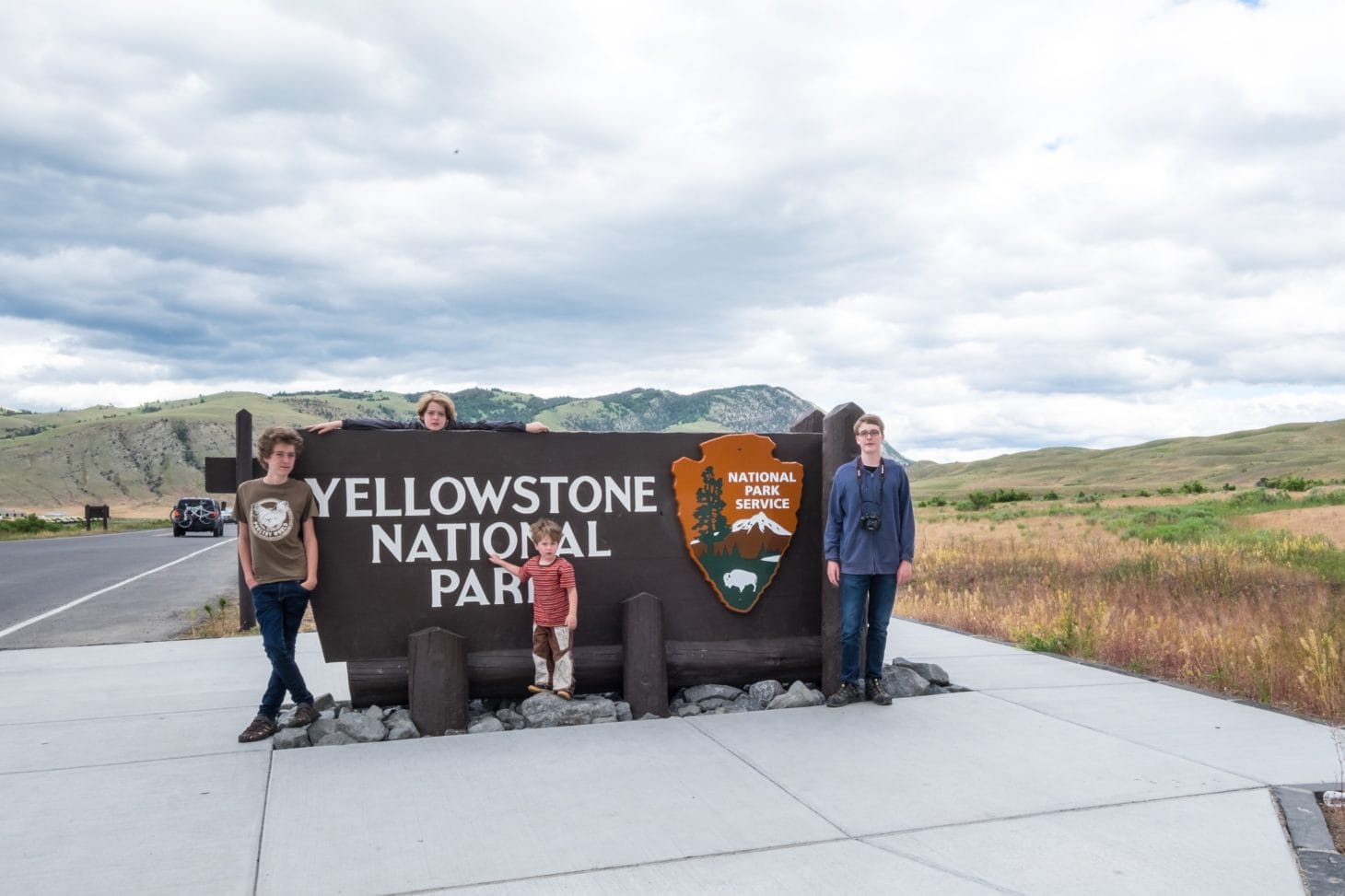
Pack for Fast-Changing Yellowstone Weather
If you only have a couple of days as part of a longer trip, you can still enjoy some of the sights and get a taste of the park. Pick just a few highlights, and leave wanting more. However long your trip, keep in mind that traffic—often caused by bison or bear jams or by road construction—is very common. Make sure you have the right gear to enjoy the park in all temperatures as Yellowstone’s weather can be temperamental at any time of year.
Beat the Crowds Without Missing Top Sights
If you’re looking to beat the crowds in Yellowstone National Park, rainy days can often bring a rare break from crowds at popular sights, so take advantage of them. Always get an early start to your day. Historically, the park is most crowded in July and August, so planning a trip outside of peak months will also yield fewer crowds.
Best RV Routes Into Yellowstone by Entrance
Yellowstone National Park is larger than the state of Rhode Island, and your experience will vary depending on which direction you’re entering the park from.
From the East: U.S. 16 vs. 14 and 14A
Yellowstone has five entrance gates: north, south, west, east, and northeast. The biggest challenge for most people in getting to Yellowstone in an RV is figuring out which route to take coming through the mountains from the east, which can be a difficult entrance for RVers. Your three main options are U.S. highways 14, 14A, and 16. The conventional wisdom is that Route 14 is scary in an RV, Route 14A is terrifying, and Route 16 is reasonable. U.S. Route 16 is a well-maintained road with wide shoulders, passing lanes, and minimal steep drop-offs. It will still take you up to 9,666 feet at Powder River Pass and back down again via some long grades, so make sure to brush up on your mountain driving skills before attempting this route.
Northeast Entrance: Beartooth Mountains and U.S. 212
The northeast entrance is perhaps the most dramatic and scenic, but can also be challenging in an RV. The route passes through the Beartooth Mountains on U.S. Route 212, which includes switchbacks and steep mountain grades, so it’s generally not recommended for large rigs.
From the North: I-90 to U.S. 89 (Gardiner)
If you’re arriving from the north, you’ll travel on I-90, which connects to Yellowstone via U.S. Route 89 in Gardiner, Montana. This is the easiest entrance route for RV driving.
From the West: West Yellowstone via U.S. 191 or U.S. 20
For those arriving from the west, you’ll enter the park through the West Yellowstone gateway community and then choose either a north or south route. U.S. Route 191 travels north toward Bozeman. If you choose to go south, you’ll travel along U.S. 20 toward I-15, which includes the Targhee Pass—a long up-and-down grade with truck lanes and pull-offs. Both routes are manageable in an RV.
From the South: Link to Grand Teton on U.S. 89
Finally, the south entrance connects Yellowstone National Park and Grand Teton National Park via U.S. Route 89. You’ll see plenty of RVs on this scenic route, but pay attention to the grades in the Yellowstone section.
Where to Camp with an RV: Inside Yellowstone vs. Nearby Towns

One Base Camp or Move Mid-Trip?
Yellowstone is massive, which means you have plenty of options when it comes to choosing a campground. You may decide on a single base camp to avoid having to pack up halfway through your trip, but that will mean some very long driving days if you want to hit all the highlights. By choosing two different campgrounds throughout the park, you can split the trip into more manageable segments.
Another factor to consider on an RV trip to Yellowstone National Park is whether you want to stay inside or outside of the park. If you have a smaller RV and you’re set up for dry camping, there are several National Park Service campgrounds to choose from. If you need hookups, Fishing Bridge is your only in-park option. Outside the park, look to the small towns of West Yellowstone and Gardiner for campgrounds with hookups.
Fishing Bridge, Wyoming: Only Full-Hookup RV Park Inside Yellowstone
Fishing Bridge is the only RV park with full hookups that’s actually inside Yellowstone National Park, which is the main reason to stay here. While it’s a bare-bones RV park, visitors note that it has a high price tag for national park standards. As long as you go into your experience with expectations in check, Fishing Bridge is an excellent jumping-off point for exploring close-by sites like Yellowstone Lake and the Grand Canyon of the Yellowstone. NOTE: Fishing Bridge is closed for renovations until the fall of 2021 with hopes that it will reopen with some upgrades.
Yellowstone Grizzly RV Park, Montana: Full Hookups Near West Entrance
Yellowstone Grizzly, which is located just outside the western park entrance, offers manicured sites and full hookups right in the charming little town of West Yellowstone. The location is within easy walking distance of shops, restaurants, and other attractions like the Grizzly and Wolf Discovery Center.
Mammoth Campground, Wyoming: Year-Round Access, No Hookups, 30-Foot Limit
Mammoth Campground is an in-park option without hookups, look toward the beautiful Mammoth Hot Springs area, which is close to the town of Gardiner, Montana. This corner of the park is a long haul from most of the other popular attractions, so you will most likely encounter fewer crowds here. If you’re looking to visit off-season, it’s also the only campground in the park that’s open year-round. Note that the sites here cannot accommodate RVs longer than 30 feet.
Other RV Campgrounds to Consider
- In West Yellowstone: Yellowstone Park/West Gate KOA, Baker’s Hole Campground (USFS)
- In Gardiner: Rocky Mountain RV Park
- In Yellowstone National Park: Madison Campground, Grant Village Campground
Yellowstone Highlights Along the Grand Loop for RV Travelers
No matter where you go in Yellowstone, you’re bound to see plenty of strange and beautiful sights—the park alone is home to over half of the world’s active geysers, more than 500 in total. But of course, there are some standouts that shouldn’t be missed in this expansive national park.
Old Faithful and Upper Geyser Basin: Easy Timing, Historic Inn Tours
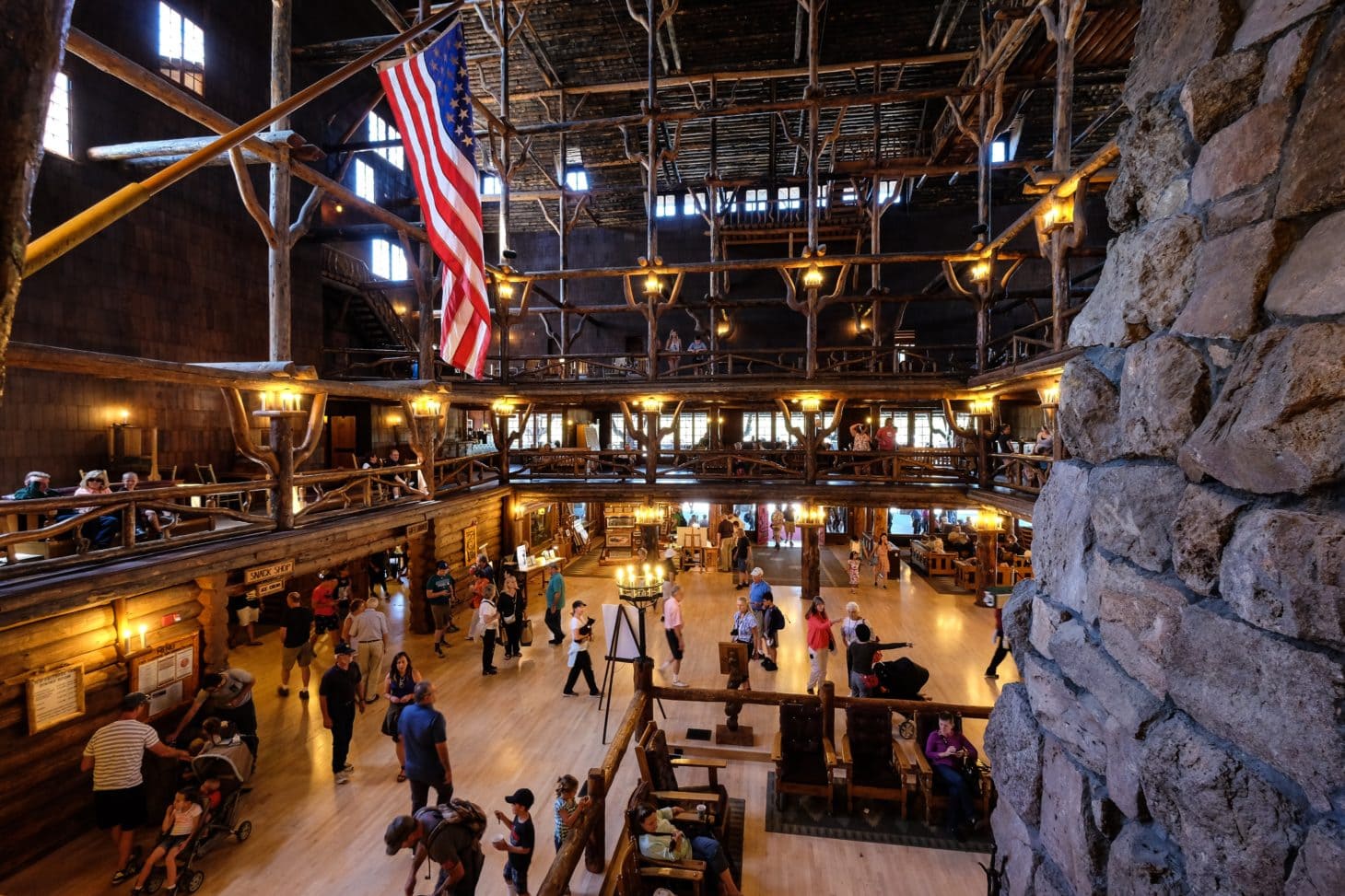
If you only know about one thing in Yellowstone, it’s probably Old Faithful, the geyser that erupts with convenient regularity every 75 minutes or so. It’s not Yellowstone’s most impressive geyser, but it’s by far the easiest to see, both because of the predictable timing and because it’s right outside of the Old Faithful Visitor Center. Due to accessibility, it’s one of the more popular park attractions, so arrive early to beat the crowds. While in the area, make sure to explore the Upper Geyser Basin for even more geysers and other geothermal phenomena. For history buffs, the Old Faithful Inn offers free historic tours of the property, which is an impressive example of early “Parkitecture.”
These 20 National Park Service lodges showcase ‘parkitecture’ at its finest
Midway Geyser Basin: Grand Prismatic Spring Boardwalk Views
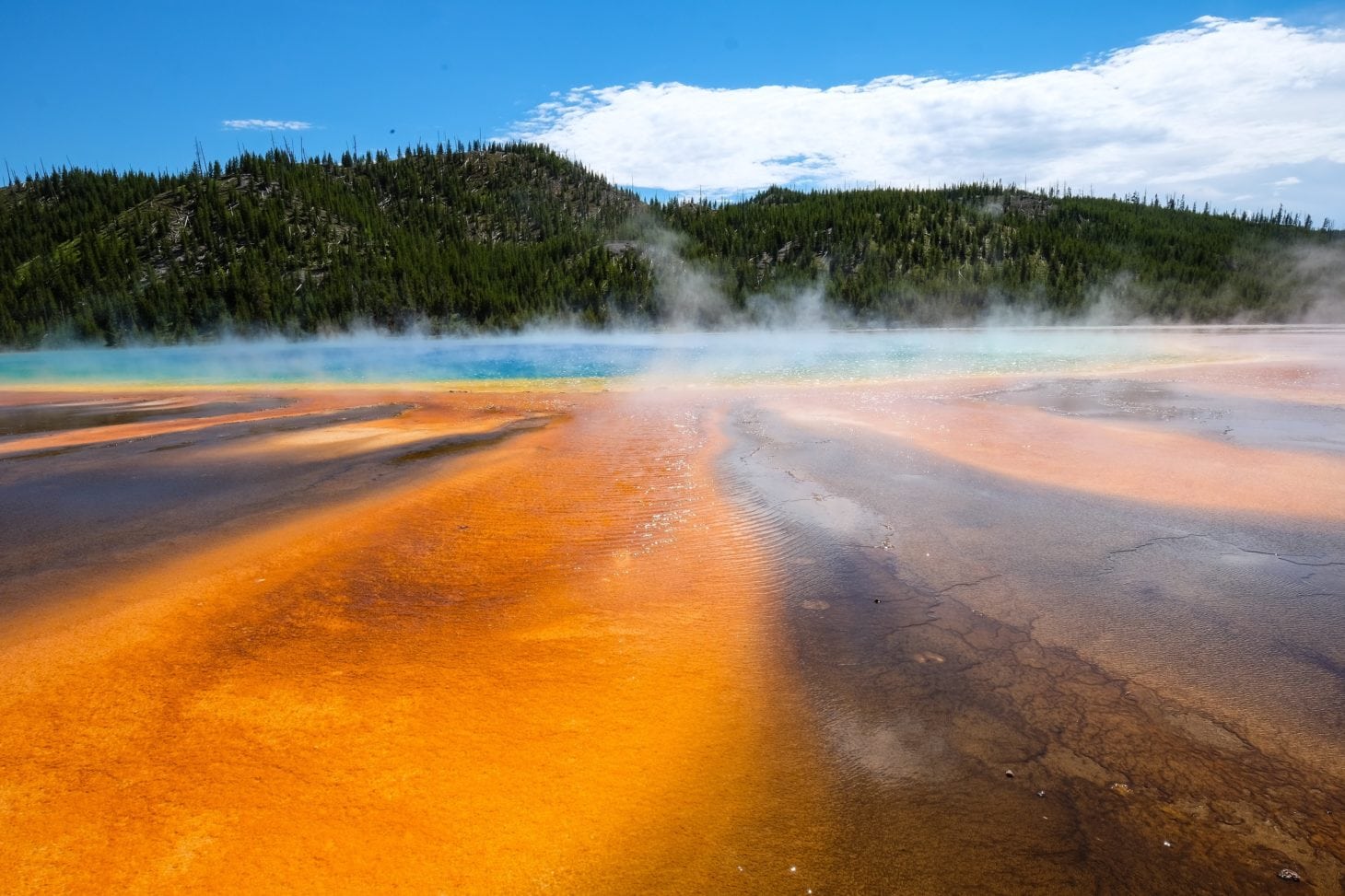
If you continue driving clockwise around the Grand Loop Road, you’ll encounter Midway Geyser Basin just a few minutes away from Old Faithful. Here you’ll find the colorful Grand Prismatic Spring, the third largest hot spring in the world. A short boardwalk takes you past the spring to other thermal features nearby.
Mammoth Hot Springs: Travertine Terraces and Fort Yellowstone History
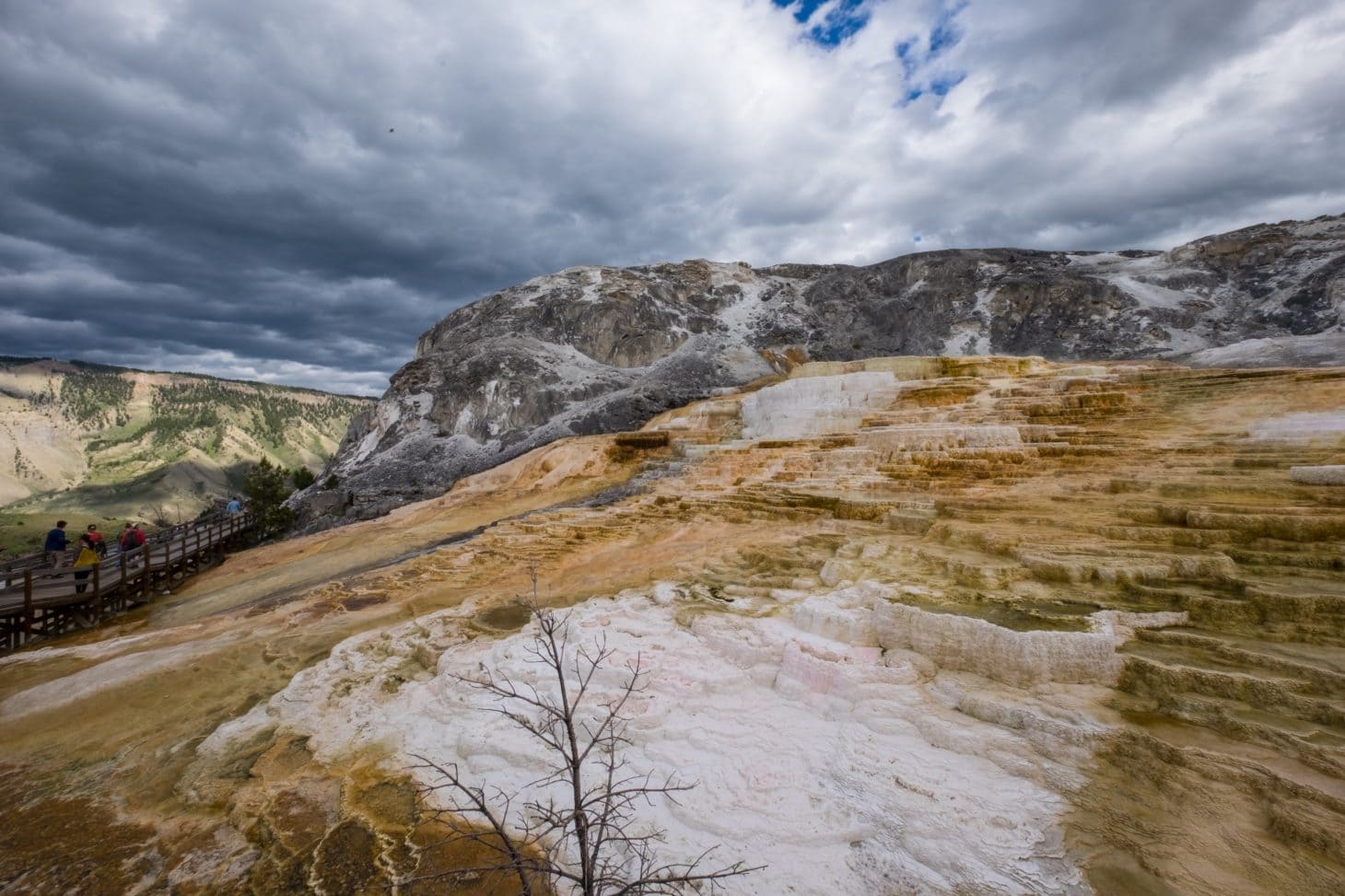
Located in the far northwest corner of the park, Mammoth Hot Springs showcases a completely different landscape from anywhere else in Yellowstone with its steaming travertine terraces. You can get up close to the hydrothermal action via a boardwalk trail that winds through the area. This is also the site of Fort Yellowstone, where U.S. Army soldiers once protected the just-established national park from poachers and developers. It’s an interesting stop for those looking to learn about the park’s early days, as many of the original buildings are still standing. And, while you’re at this end of the park, make sure to visit the north entrance gate and the Roosevelt Arch.
Lamar Valley: Wildlife Viewing and the Lamar River Trail
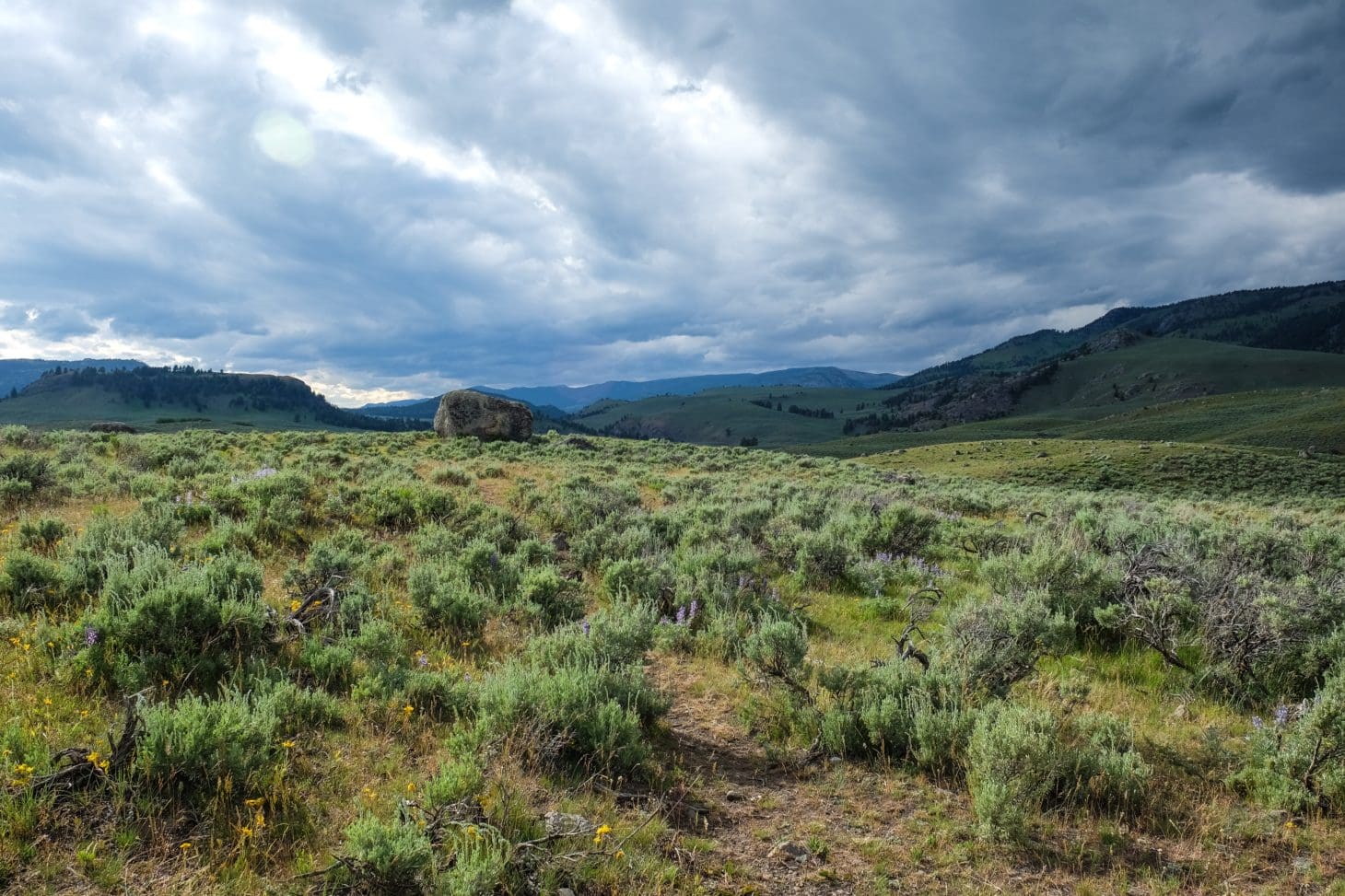
It’s easy to spot bison in Yellowstone as they roam freely all over the park. But the Lamar Valley offers a glimpse of some lesser-seen wildlife, like the 100 or so wolves who live inside the park. Here, you’ll also find the Lamar River Trail, which is a 20-mile out-and-back trail through an area that’s home to unique wildlife and fewer crowds. Don’t feel like you have to hike a marathon though, you’ll be able to enjoy some peace and quiet (and rare animals, if you’re lucky) even just a few miles in.
Grand Canyon of the Yellowstone: North and South Rim Overlooks
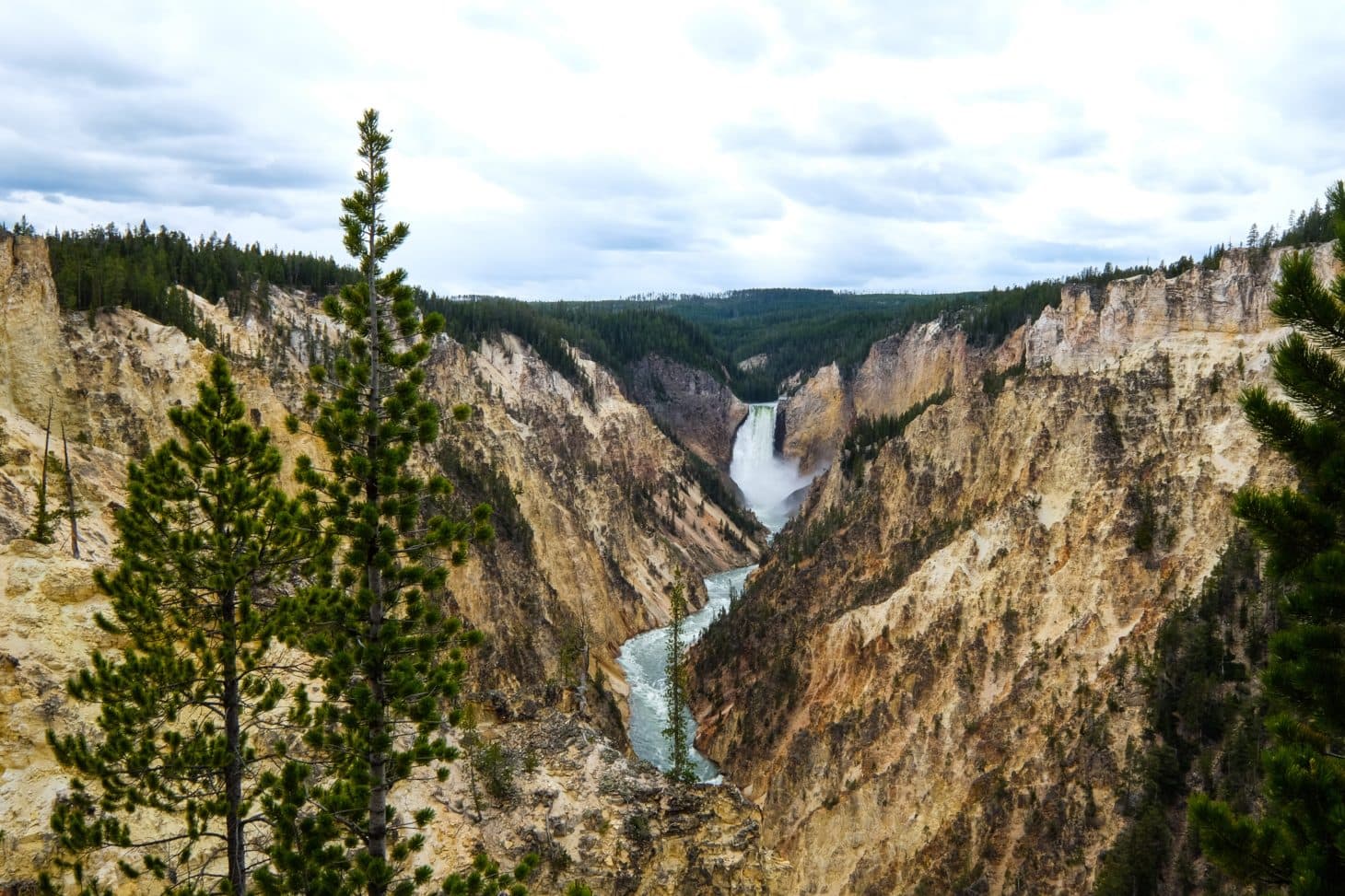
You may recognize the distant view of a waterfall pouring into the 1,000-foot-deep canyon from Artist Point as you approach the gushing falls. Just make sure you drive the North and South Rim roads for the best views. And don’t miss the Canyon Visitor Education Center for exhibits on the supervolcano that’s responsible for Yellowstone’s one-of-a-kind landscape.
Yellowstone Lake and West Thumb: Lakeside Geysers and Boat Tours
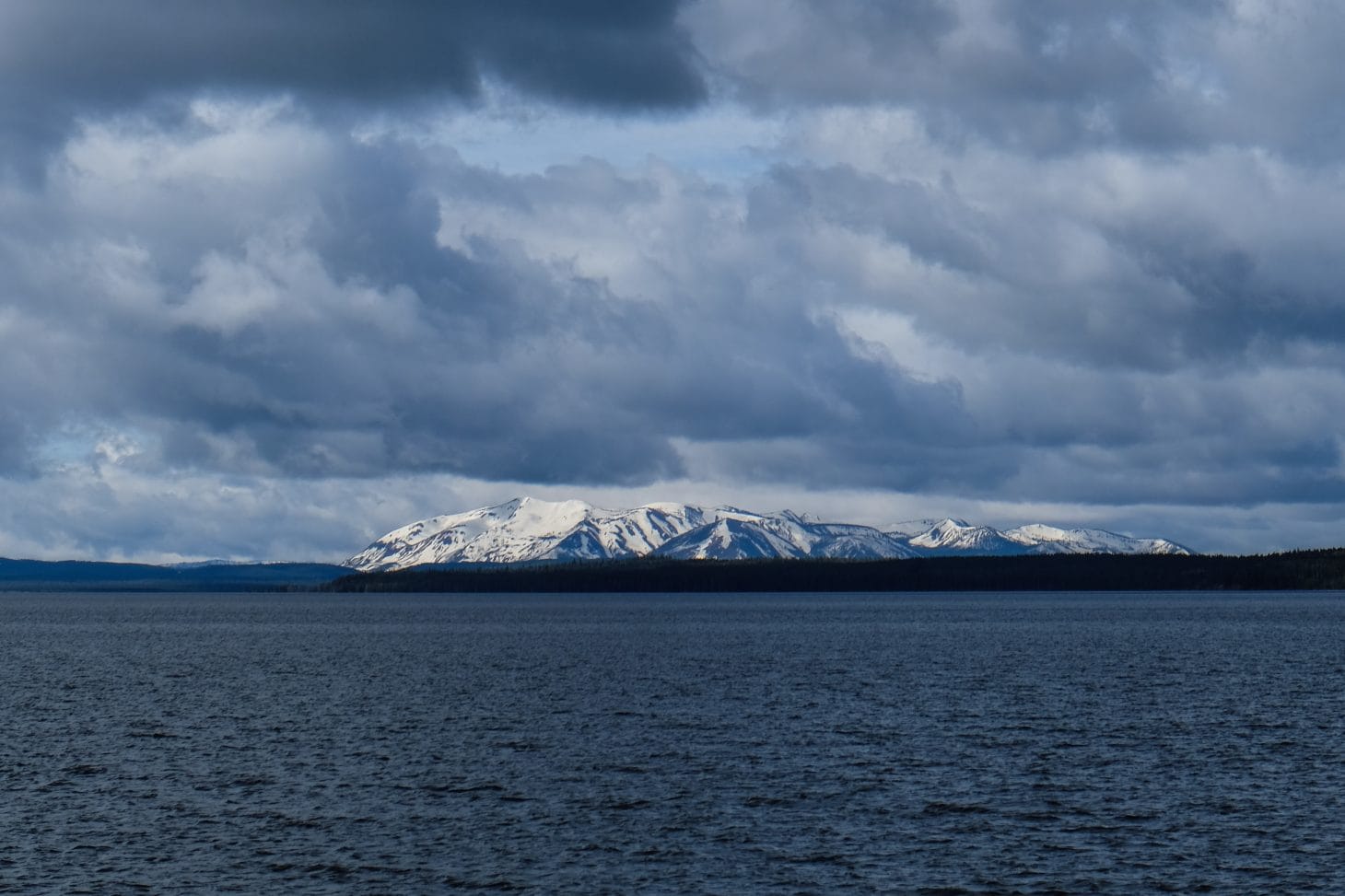
Yellowstone Lake is the largest high-elevation lake in North America, with more than 140 miles of shoreline. Private boats are allowed, but the cold water temperatures and frequent, sudden winds make it suitable only for experienced boaters. A concessionaire offers an hour-long guided tour on an enclosed boat. At West Thumb Geyser Basin, you can walk along the boardwalk and see the lake and geysers at the same time, including at least one geyser that’s actually in the lake.
A trip to Yellowstone should be on every RVers bucket list as there’s really nothing that parallels its history and nature. With some extra planning and a well-devised itinerary, a trip here in an RV can be simple, fun, and sure to wow the whole family.
Everything you need to know to plan a national park road trip

